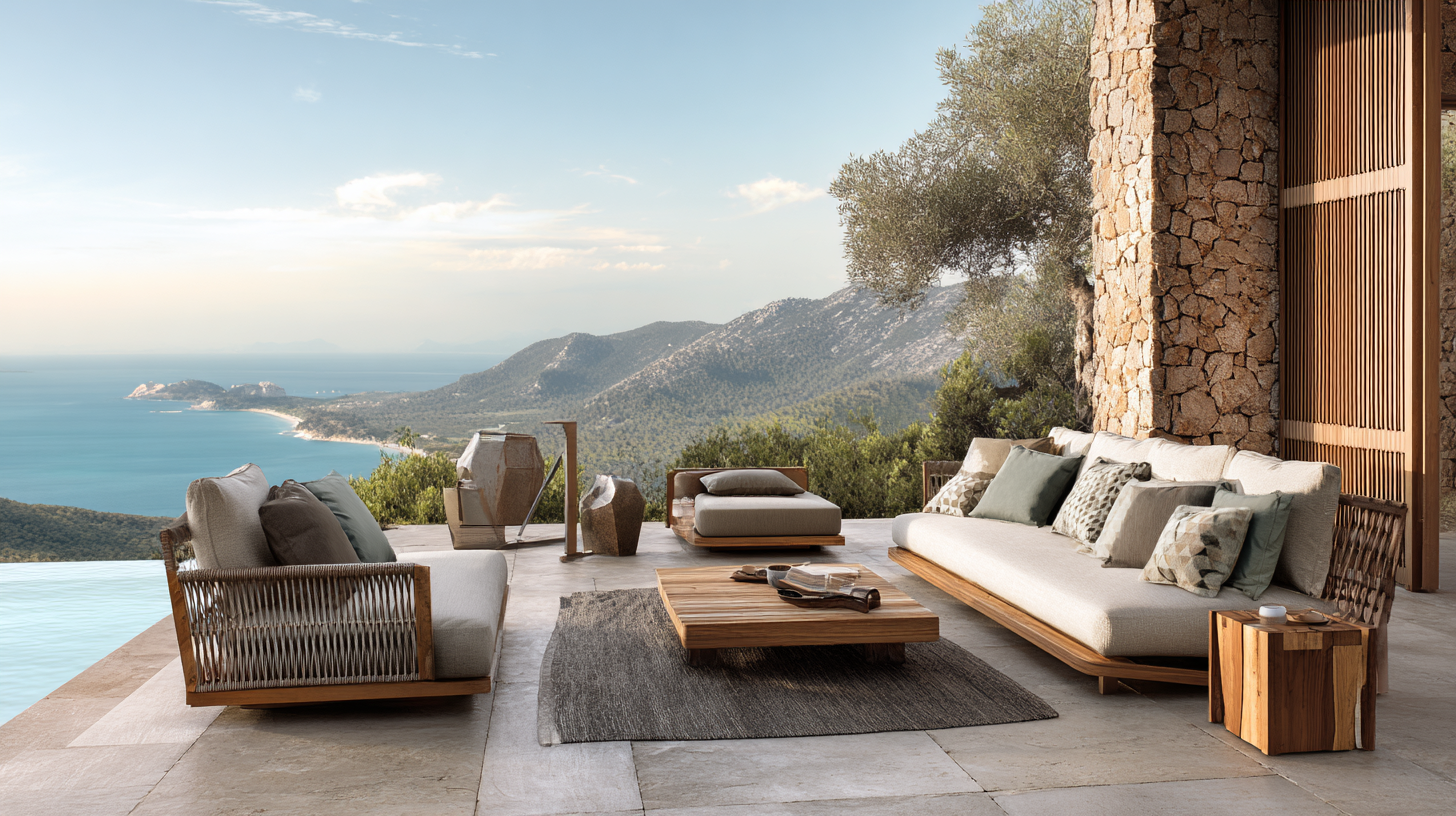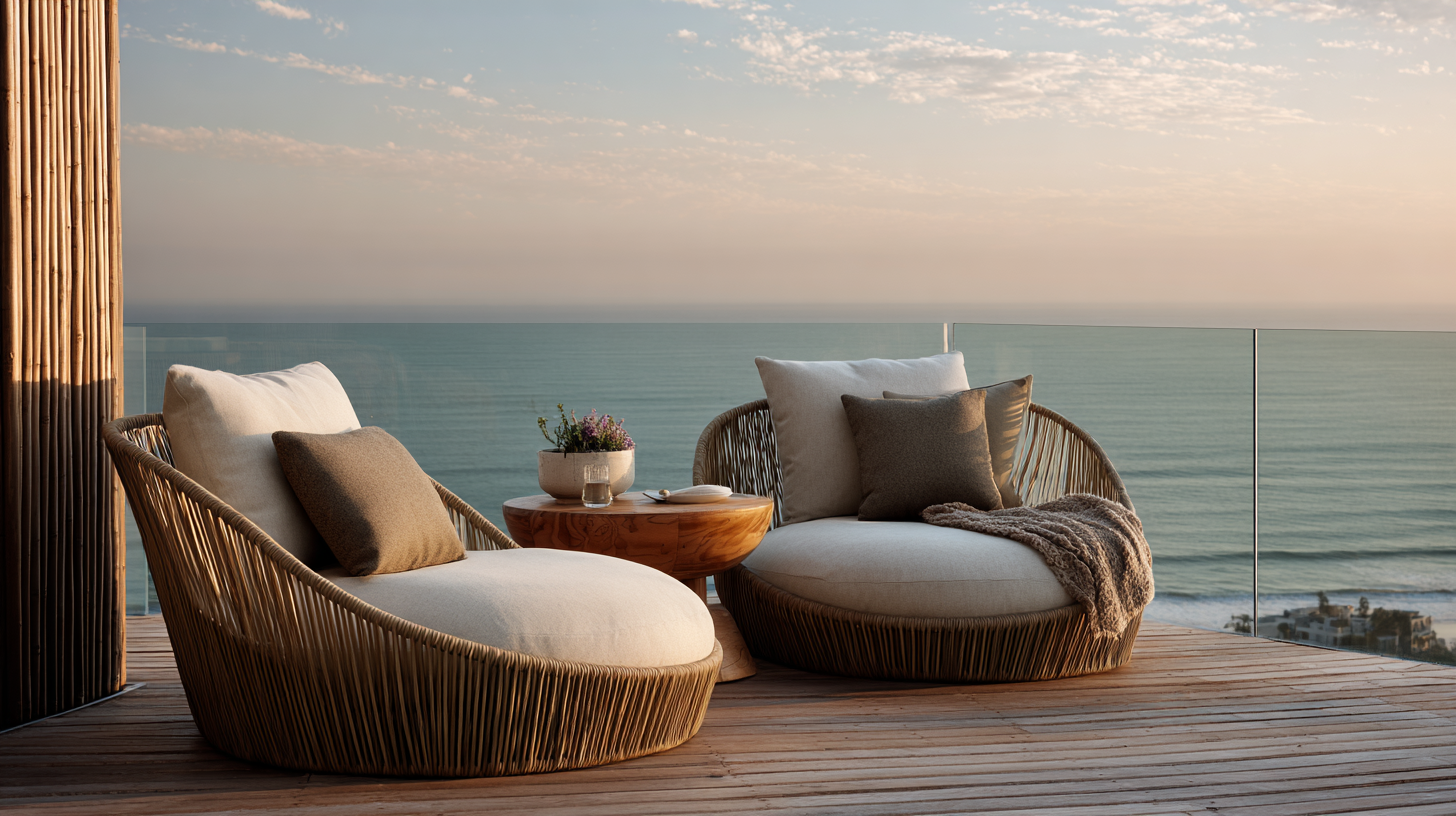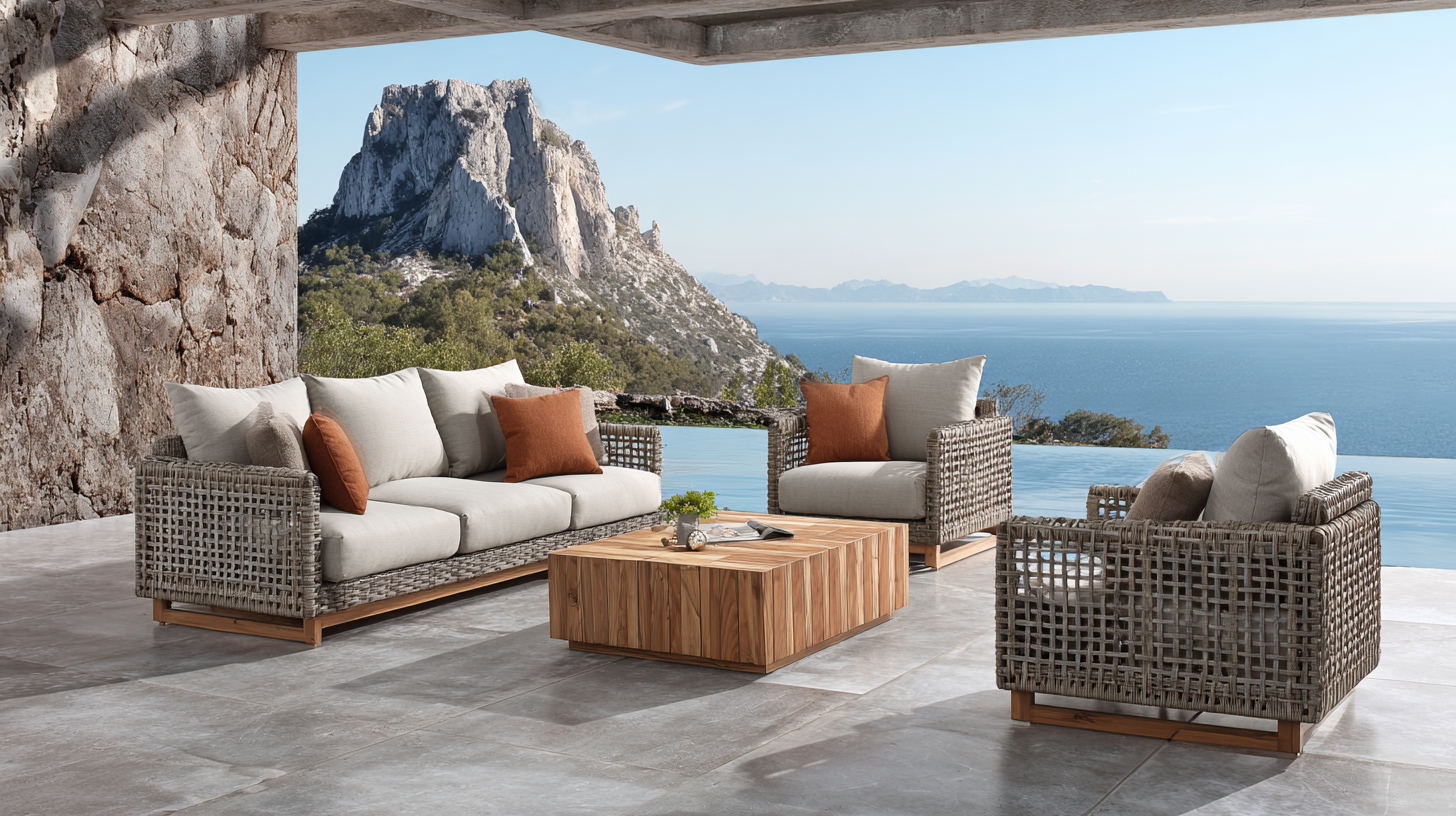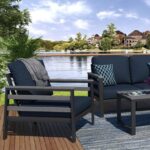Global Market Trends 2025: Exploring Luxury Outdoor Furniture for International Buyers
As we look toward 2025, the global market for premium outdoor furniture is poised for significant growth, driven by international buyers seeking both functionality and aesthetic appeal in their outdoor spaces. This blog will explore the emerging trends shaping the luxury outdoor furniture sector, highlighting innovative designs and sustainable materials that cater to the discerning tastes of consumers worldwide. We will also delve into the top strategies for marketing premium outdoor furniture, ensuring that brands can effectively capture the attention of a global audience eager for high-quality, stylish solutions for their outdoor living areas. By understanding these trends and strategies, businesses can position themselves to thrive in a competitive market, appealing to a clientele that values both luxury and longevity in their outdoor furnishings.

Emerging Luxury Outdoor Furniture Trends in 2025: A Global Perspective
As we look towards 2025, the luxury outdoor furniture market is witnessing an exciting transformation influenced by global trends and consumer preferences.
One of the most notable emerging trends is the integration of sustainable materials into outdoor furniture designs.
Buyers are increasingly seeking eco-friendly options that not only enhance outdoor aesthetics but also reflect a commitment to environmental responsibility.
From recycled aluminum to sustainably sourced teak, manufacturers are innovating with materials that stand up to the elements while leaving a minimal carbon footprint.
Another key trend shaping the future of outdoor luxury furniture is the emphasis on multifunctionality.
As outdoor spaces become extensions of the home, furniture that can adapt to various uses is gaining popularity.
Pieces that easily transition from relaxation to entertainment, such as modular seating arrangements or versatile dining sets, are in high demand.
This trend is not just about practicality; it enhances the outdoor experience, allowing consumers to maximize their enjoyment regardless of the occasion or season.
With these developments, the luxury outdoor furniture market is set to offer international buyers a range of stylish and functional options that cater to evolving lifestyles.
Top Luxury Materials for Outdoor Furniture: What International Buyers Should Know
As the global market for luxury outdoor furniture continues to flourish, international buyers should be well-versed in the top materials that define this segment. According to a report by Allied Market Research, the global outdoor furniture market is projected to reach $36.5 billion by 2025, driven by a growing demand for high-quality, aesthetically pleasing products. Luxury outdoor furniture, in particular, is seeing a surge in preference for materials that not only enhance durability but also offer a notable touch of elegance.
Teak wood remains a favorite among luxury brands, celebrated for its resilience against the elements and its rich, warm appearance. It is estimated that teak can last up to 70 years without significant degradation when cared for properly. Additionally, powder-coated aluminum has gained traction due to its lightweight nature and resistance to rust, providing both functionality and style. Furthermore, advanced synthetic materials like resin wicker are being utilized for their weather-resistance and versatility, making them ideal for high-end patio sets. With these materials at the forefront, international buyers can invest in outdoor furniture that combines durability with luxury, ensuring long-term satisfaction and aesthetic appeal.
Global Market Trends 2025: Luxury Outdoor Furniture Materials
Innovative Designs in Outdoor Furniture: Case Studies from Around the World
As global market trends evolve, luxury outdoor furniture has emerged as a focal point for international buyers. Innovative designs from various countries offer a blend of aesthetics and functionality, transforming outdoor spaces into elegant extensions of the home. For instance, Italy has championed the art of combining sleek lines with natural materials, creating pieces that resonate with Mediterranean charm. Designers like Paola Navone infuse contemporary sensibilities with traditional craftsmanship, resulting in outdoor furniture that is both stylish and durable.
Across the ocean, Australia’s approach reflects a more rugged, nature-inspired ethos. Local designers incorporate sustainable materials and weather-resistant finishes that withstand the dynamic climate. This trend aligns with the growing emphasis on eco-friendly living, appealing to global consumers who prioritize sustainability without compromising on elegance. Additionally, the interplay of indoor and outdoor living spaces in designs showcases versatility, catering to a lifestyle that encourages spending time outdoors. These international case studies highlight the innovative spirit driving the luxury outdoor furniture market, making it an exciting sector for discerning buyers worldwide.
How to Choose the Right Outdoor Furniture for Luxury Spaces
As the global outdoor furniture market is projected to grow significantly, reaching a size of $814.4 billion by 2032 with a compound annual growth rate of 5.50% from $560 billion in 2025, the choice of luxury outdoor furniture has never been more critical for international buyers. This increase in market size reflects not only the rising demand for high-end outdoor living spaces but also a growing preference for premium products among affluent consumers. When selecting outdoor furniture, a focus on material quality—whether wood, metal, or synthetic fabrics—is essential, as it influences longevity and aesthetic appeal.
In 2024, the outdoor furniture market will already see a valuation of $532.7 billion, supporting the trend of upscale investments in residential and commercial spaces. For luxury outdoor areas, the choice between modern and traditional styles can significantly impact the overall ambiance. Buyers should also consider their target price range, which may vary from luxury to high-end products, to ensure they meet their specific design requirements while capitalizing on market growth. With the right approach, investing in luxury outdoor furniture can transform spaces into captivating retreats that reflect personal taste and sustainability.

Sustainable Practices in Luxury Outdoor Furniture Production: A Global Overview
As the global demand for luxury outdoor furniture rises, sustainability has become a pivotal focus for manufacturers. With consumers increasingly aware of environmental issues, brands are adopting sustainable practices in their production processes. This includes sourcing materials responsibly, utilizing eco-friendly manufacturing techniques, and designing products that are meant to last. By aligning their operations with sustainable principles, companies not only cater to conscientious consumers but also contribute to the larger goal of environmental preservation.

Tips for Choosing Sustainable Luxury Outdoor Furniture:
1. Look for Certifications: When shopping, check for certifications like FSC (Forest Stewardship Council) that indicate responsible sourcing of materials. This ensures your furniture is made from sustainably harvested wood.
2. Evaluate Durability: Invest in high-quality pieces that are durable and weather-resistant. Longer-lasting furniture reduces the need for frequent replacements, minimizing waste over time.
3. Consider Local Brands: Supporting local manufacturers can decrease the carbon footprint associated with transportation. Plus, many local brands prioritize sustainable practices and can offer unique designs.
By making informed choices, consumers can enjoy luxurious outdoor spaces while also taking significant steps toward sustainability.

 Catalog
Catalog Replacement Cushions
Replacement Cushions New Jersey Catalog
New Jersey Catalog